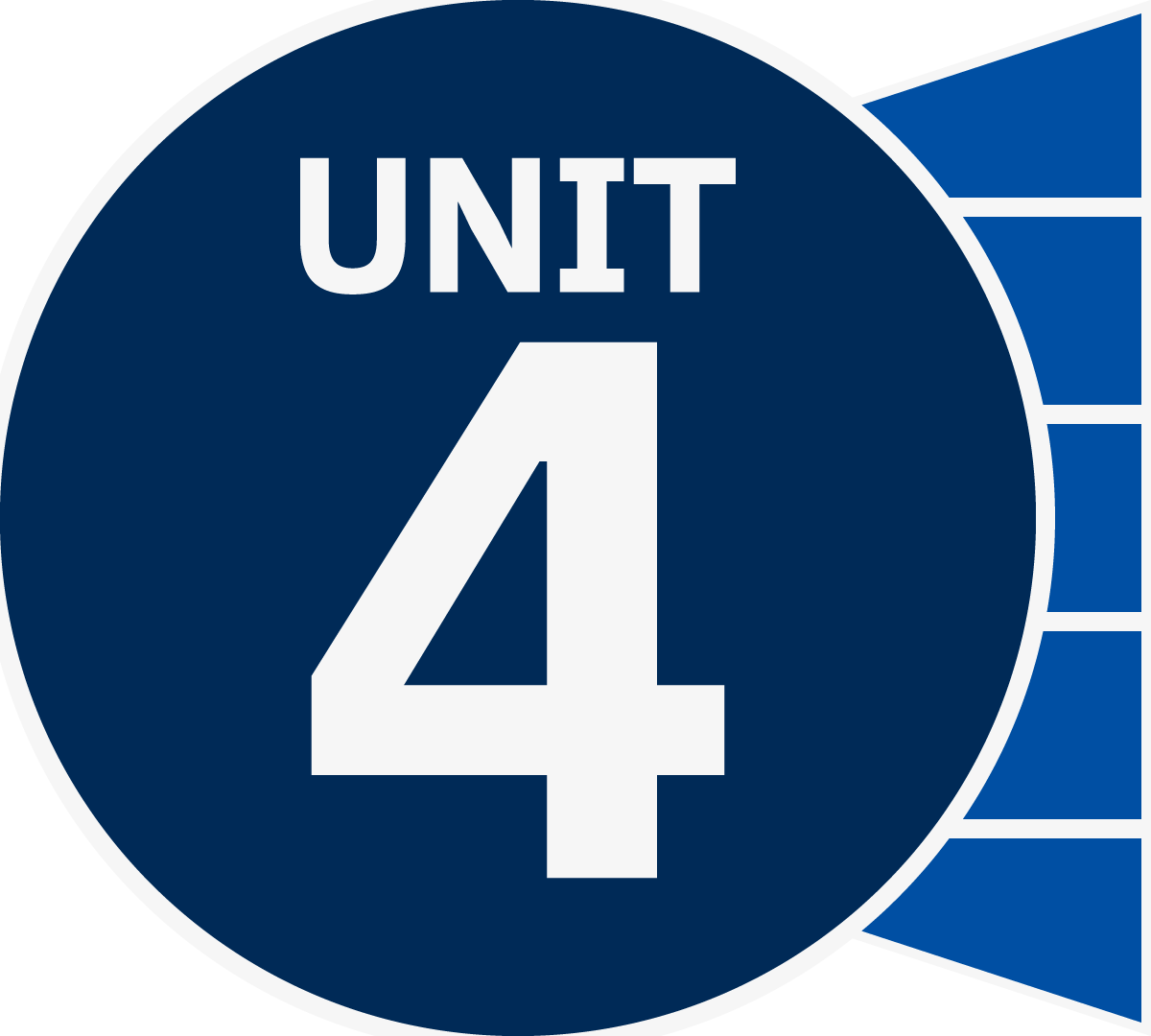Inquiry Companion: Unit 4
Unit 4 challenges students to investigate both the genius and the missed opportunities in the system of checks and balances and division of power. Our Inquiry Companion Guide activities for Unit 4 facilitate student participation in inquiry-based civics learning for each strategy.
Students engage by creating a Venn diagram of the division of power between the federal government and state governments as well as explore the role federalism plays in their lives today. They will explain the division of powers as illustrated in Marbury v Madison by participating in a Paideia Seminar. Students then elaborate on their knowledge of judicial review through a democratic experience simulation. Finally, students will evaluate their understanding of constitutional principles by creating an infographic.
Best practices for culturally responsive teaching weave through each activity.
Inquiry Guide Activity
- Unit 4, Lesson 26: How Does American Federalism Work?
- Unit 4, Lesson 17: How Did the Constitution Create a Federal System of Government?
- Active learning
- Awareness of political matters
- Collaboration
- Reading
- Self-management
- Apply knowledge about the impact federalism has on the U.S. educational system.
- Evaluate the power of the federal government to regulate education.
- Students will create an infographic report answering the inquiry question: “Should the federal government mandate a civics course for high school graduation?”
- Should the federal government mandate a civics course for high school graduation?
- American Federalism (video)
- Federal v. State Powers Chart
- Federal v. State Powers Chart Answer Key
- Infographic development tool or poster paper and markers
- Reflection
- We the People: The Citizen & the Constitution textbook
- delegated powers Those powers granted to the national government under the United States Constitution.
- federalism A form of government in which power is divided and shared between a central government and state and local governments.
- federal mandate A directive or requirement issued by the central government that imposes specific obligations or regulations on states, local governments, or other entities.
- reserved powers Powers that are retained by the states, encompassing areas not expressly granted to the federal government.
Federalism in the United States refers to the distribution of powers and responsibilities between the federal government and the individual states. This division of authority is outlined in the U.S. Constitution, where certain powers are delegated to the federal government, while others are reserved for the states. The federal government is responsible for issues of national significance, such as defense, foreign policy, and interstate commerce, while the states have authority over matters like education, public health, and criminal law. This dual system of government aims to strike a balance between a strong, central authority and regional autonomy, allowing for flexibility in addressing diverse needs across the country.
In the context of the education system, federalism plays a crucial role in shaping policies and practices. Education is primarily a state responsibility, with each state having its own Department of Education and the power to establish and regulate its educational system. Federal attempts to regulate education usually come with much debate and controversy since it is deemed a reserved power of the states. While the federal government provides funding and sets broad guidelines through legislation like the Elementary and Secondary Education Act (ESEA) and the Every Student Succeeds Act (ESSA), states have the flexibility to design their own curricula, set standards, and administer assessments. This decentralized approach allows states to address the unique needs and priorities of their communities, fostering innovation and responsiveness to local challenges within the broader framework of federal oversight and support. When the federal government feels that it is necessary to regulate an aspect of education, many laws are passed as optional programs that provide funding for the states that decide to implement the law.
Additional resources for teacher background include:
- Federalism & Limited Government: Democratic Norms, Part 5 (Video)
- Role of Federal Government in Public Education: Historical Perspectives
- Federal Role in Education
- Education reform: States vs federal government — interview with Chad Aldeman | VIEWPOINT (Video)
- The Roles of Federal and State Governments in Education
Teachers should preview all student materials and resources prior to the lesson.
Part 1
- Welcome students to social studies.
- Introduce the inquiry question: “Should the federal government mandate a civics course for high school graduation?”
- Allow for a quick yes/no poll to see where students stand on the inquiry question.
- Allow students time to offer their own supporting questions.
- Tell students that today, they will investigate the impact of constitutional principles on decision-making in government.
- To provide a quick review of federalism, play American Federalism. As students watch, tell them to listen for a definition or examples of federalism.
- Play the video a second time to support comprehension as needed.
- Collect student responses about federalism on an anchor chart.
Part 2
- Using your routine strategy for setting up groups, divide the class into groups of approximately three to four student members.
- Tell students that they will now evaluate the federal government’s influence on education and decide whether the federal government should mandate a civics course.
- Distribute copies of the Federal v. State Powers Chart.
- Preview the chart together to ensure students understand the purpose and expectations.
- Each group will conduct its own evaluation of the inquiry question.
- Students may refer to the anchor chart to help form their opinion, if needed.
- Circulate around the room, encouraging each group, observing progress, and redirecting as needed.
- To gauge student mastery of the role the federal government plays in education, designate three areas of your classroom as follows:
- State/local government
- Federal government
- Concurrent (shared powers)
- Tell students they will now participate in a “vote with your feet” walking activity to answer the following questions:
- Which level of government makes decisions about school start times? (state/local)
- Which level of government makes decisions about funding free and reduced meal options? (concurrent)
- Which level of government makes decisions about national educational policies? (federal)
- Which level of government makes decisions about what is on the school lunch menu each day? (state/local)
- Which level of government makes decisions about building new schools or upgrading technology? (concurrent)
- Which level of government makes decisions about bus routes and bus stops? (state/local)
- Which level of government makes decisions about issuing teacher licenses and certificates? (state/local)
- Which level of government makes the final decision about students’ First Amendment rights? (federal)
- Return to groups and encourage each group to reach a consensus about the federal government’s role in education. An answer key has been provided.
- Students will create an infographic to share their findings and report back to the U.S. Department of Education. Supports for this activity include the following:
- Share infographic examples so that students understand the concept and what is expected. Suggested examples include 7 Common Types of Infographics or Creating an Interesting Infographic – Apple Education Community.
- Technology options include Canva, Piktochart, or Google Drawings, or students may design their report by hand.
- Encourage students to fully utilize infographic features like maps, statistics, graphics, illustrations, etc.
- Consider displaying infographics in a gallery walk and allow students to share feedback with each other’s groups.
- Facilitate a brief debrief discussion by asking the following questions:
- What role does federalism play in the country’s education system?
- Why is federal regulation of education controversial?
- What circumstances may require federal regulation of education?













